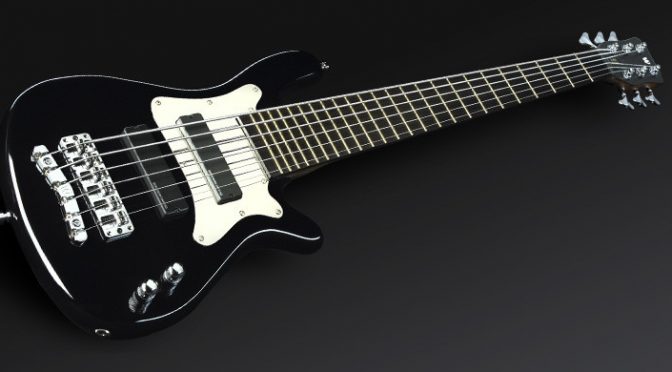TC Electronic Vibraclone Rotary with 6-String Bass Guitar – Bass Practice Diary – 10th December 2019
This week I discovered the Vibraclone Rotary pedal from TC Electronic. They call it a Rotary Speaker Emulator, which to me means it sounds like playing through a Leslie speaker. I’ve never been particularly interested in effects pedals. I very rarely take any with me on gigs. But I do use them occasionally. And if I come across a pedal that sounds good for an affordable price, then I’ll definitely snap it up. The Vibraclone ticks all the boxes of being cheap, interesting and sounding good.
How I use the Vibraclone
The Vibraclone definitely has a retro sound. The Leslie speaker was invented in the 1940’s as an addition to the hammond organ. But it was used as an effect by guitarists such as Jimi Hendrix in the 1960s. The terms Chorale and Tremolo are used on a switch on the Vibraclone to differentiate the slow and fast speed settings. These terms came from the Leslie speaker, which used the same terms for it’s slow and fast settings.
I prefer playing with the slower mode for most situations. I find it a bit more subtle. Although I feel like maybe the faster setting sounds more authentically like a Leslie.
Using effects pedals with bass
Generally I don’t use effects when I’m playing the bass and I’m certainly not an expert on pedals. But the times when I find them useful are when I’m playing a lot of solos. If I’m doing a duo gig for example, I know I’ll be called on to play lots of solos. Having something that can change and add variety to my tonal palette can really add something. If you’re playing your third or fourth solo of the night then you usually need something to help you change it a bit.
Effects loops
When I’m using effects pedals, I prefer to put them through an effects loop rather than directly into the front of an amplifier. I want my pure bass tone to be as undiluted as possible, so I don’t want anything in my signal chain between my bass and the amp.
How the effects loop works does depend on the individual amplifier. On my Ampeg GVT guitar amp I can activate and deactivate the effects loop with a foot switch. That is by far my favourite method of using an effects loop, because it means that when the effects loop is disabled I’m getting no potential discolouring of my sound from playing through a long chain of inactive pedals and patch cables. It’s a great system and I wish that I had a bass amp that worked like that.
Volume pedals
The effects loop on the back of the Markbass Little Mark III works slightly differently. It mixes the sound of the effects loop with the clean sound of your bass going into the front of the amp. So the impact of the effects is slightly more subtle as it isn’t impacting on all of the sound coming out the amp. I used a volume pedal on the effects loop to gradually bring in and fade out the effect.
You could use the foot switch on the pedal to turn the effect on and off, but that would still leave the sound of your bass going through the pedal chain in the mix. Anything in your chain will colour your bass tone. Even a true bypass pedal must have some effect on your tone and all the extra cables will as well. Which is why I think it’s very important to use an effects loop, so you can only play through the pedals when you want to. One other major advantage of using the volume pedal is if you’re using multiple pedals that you want to turn on simultaneously.

